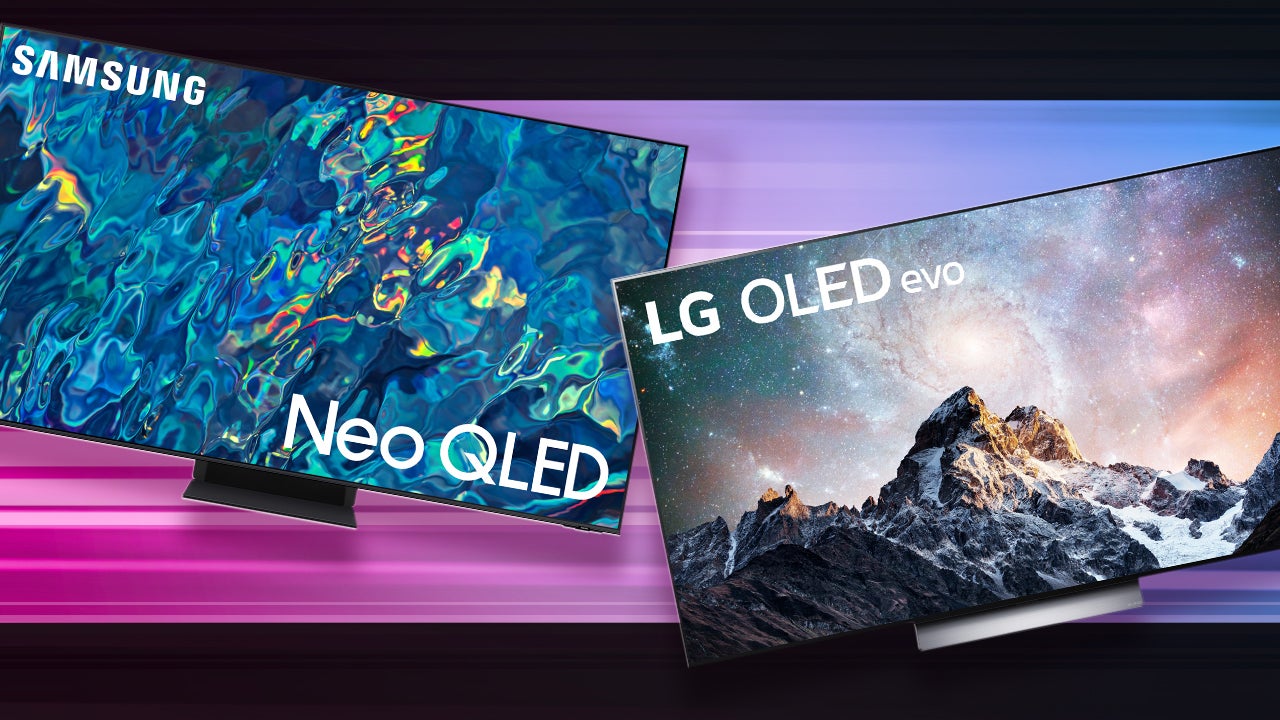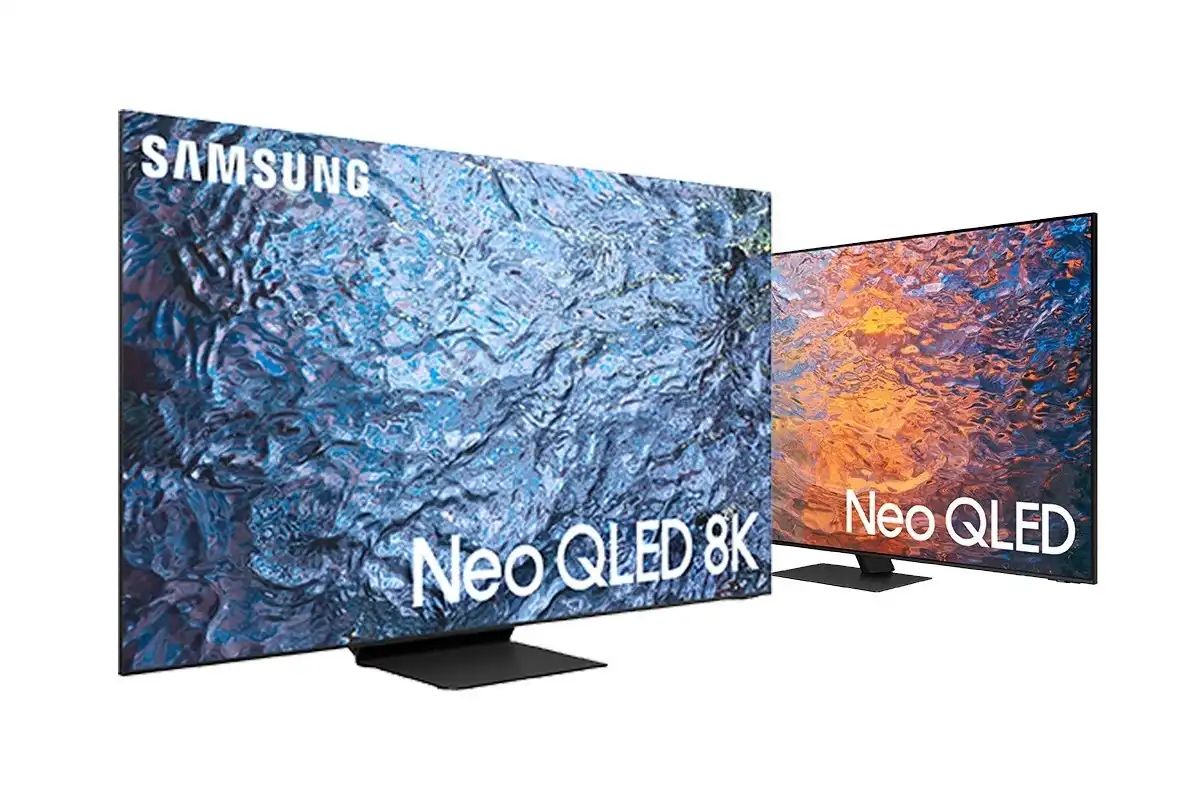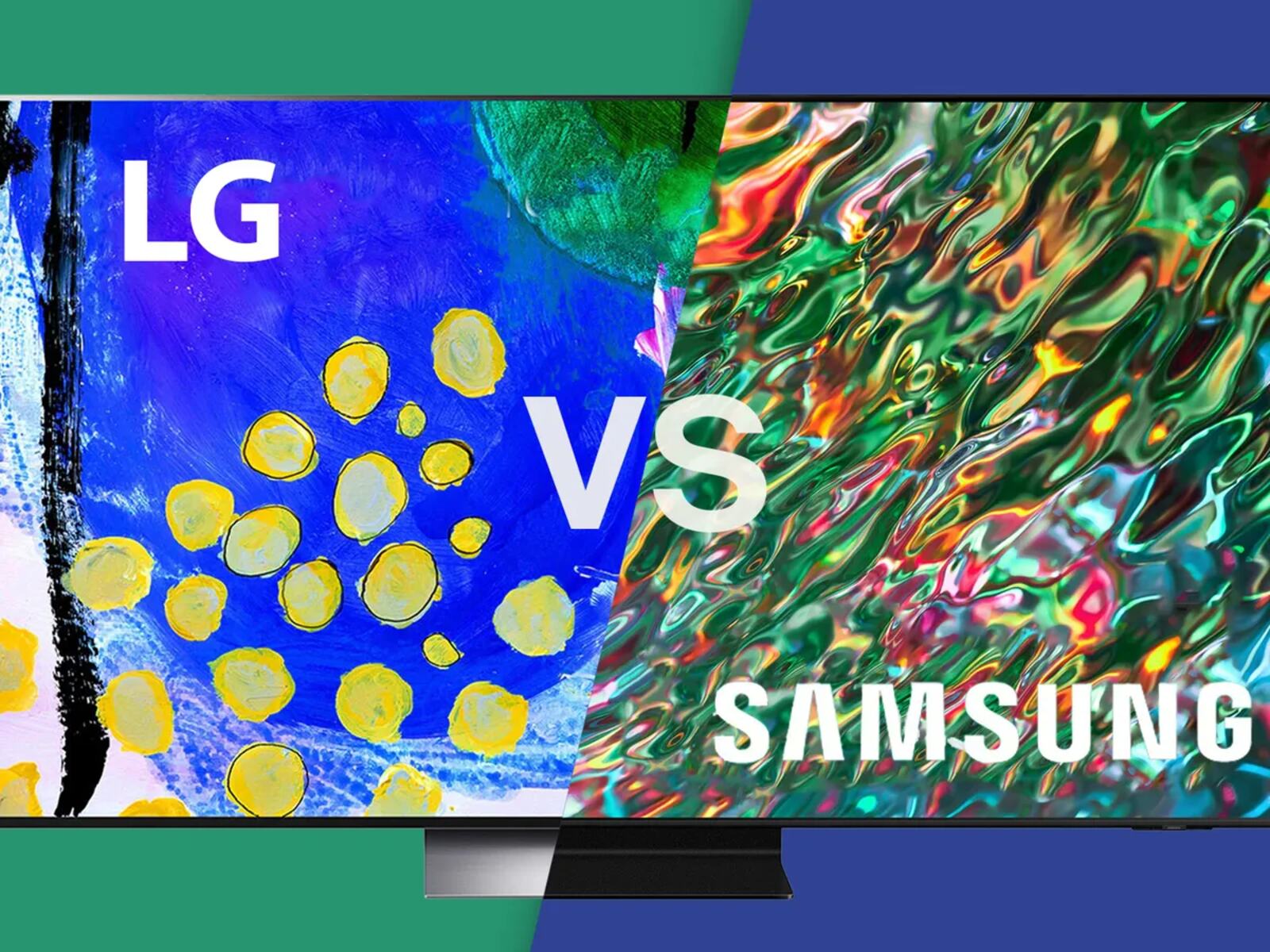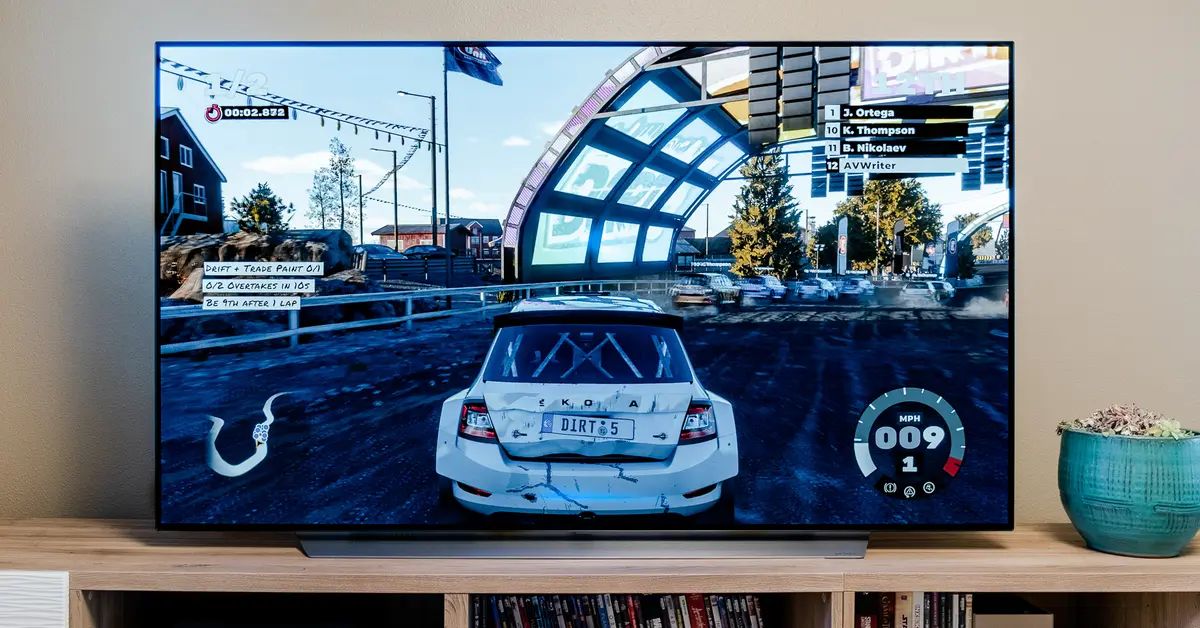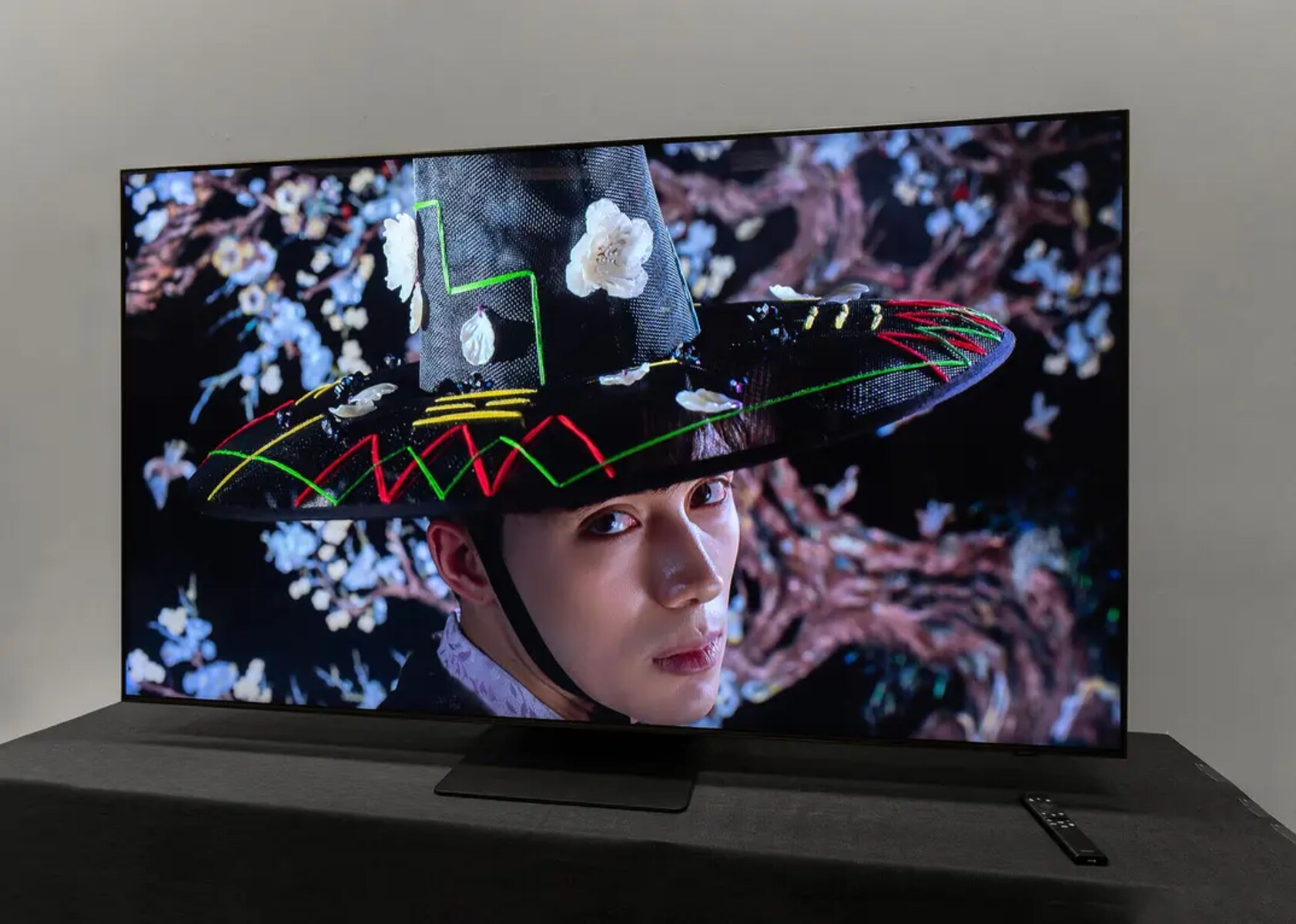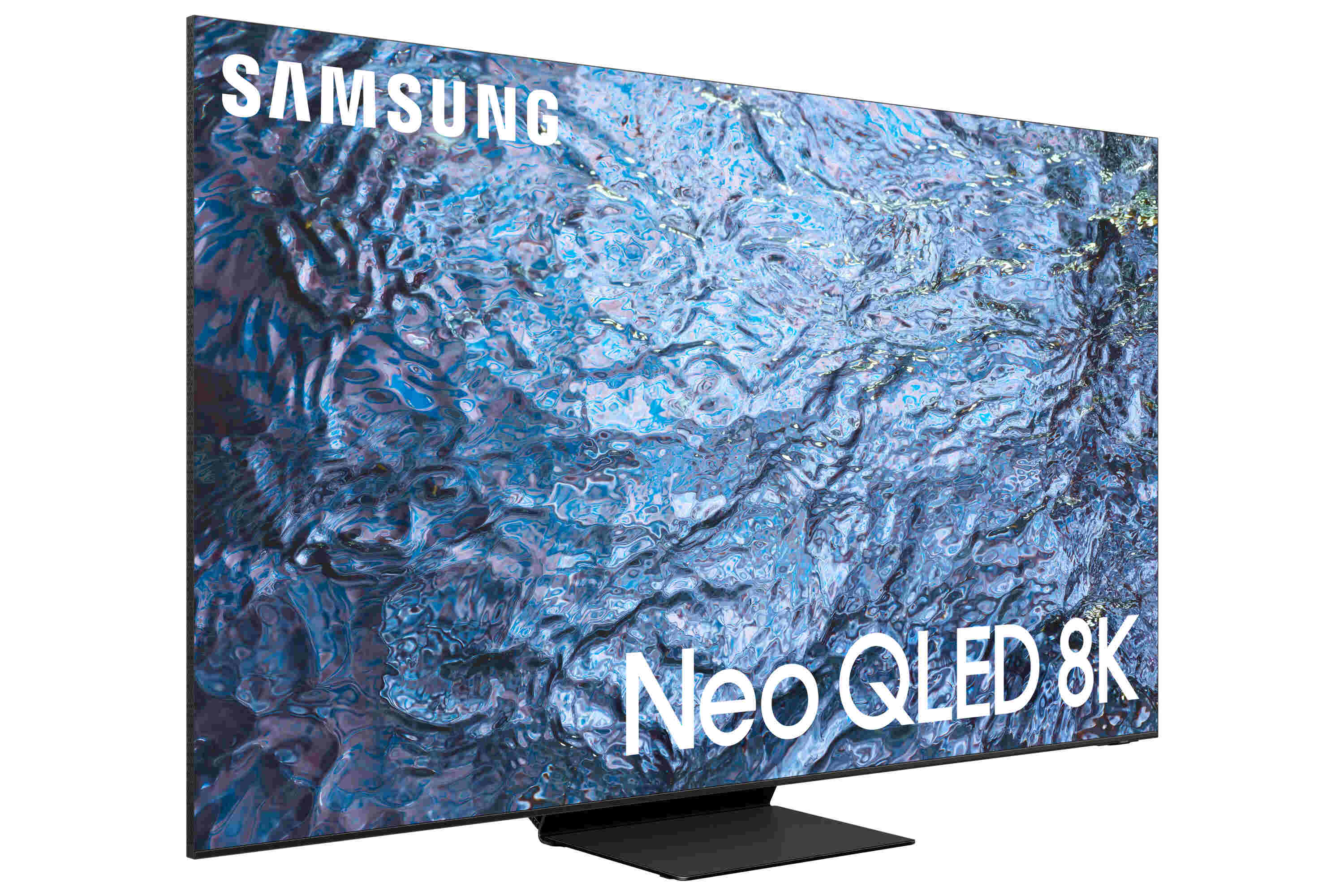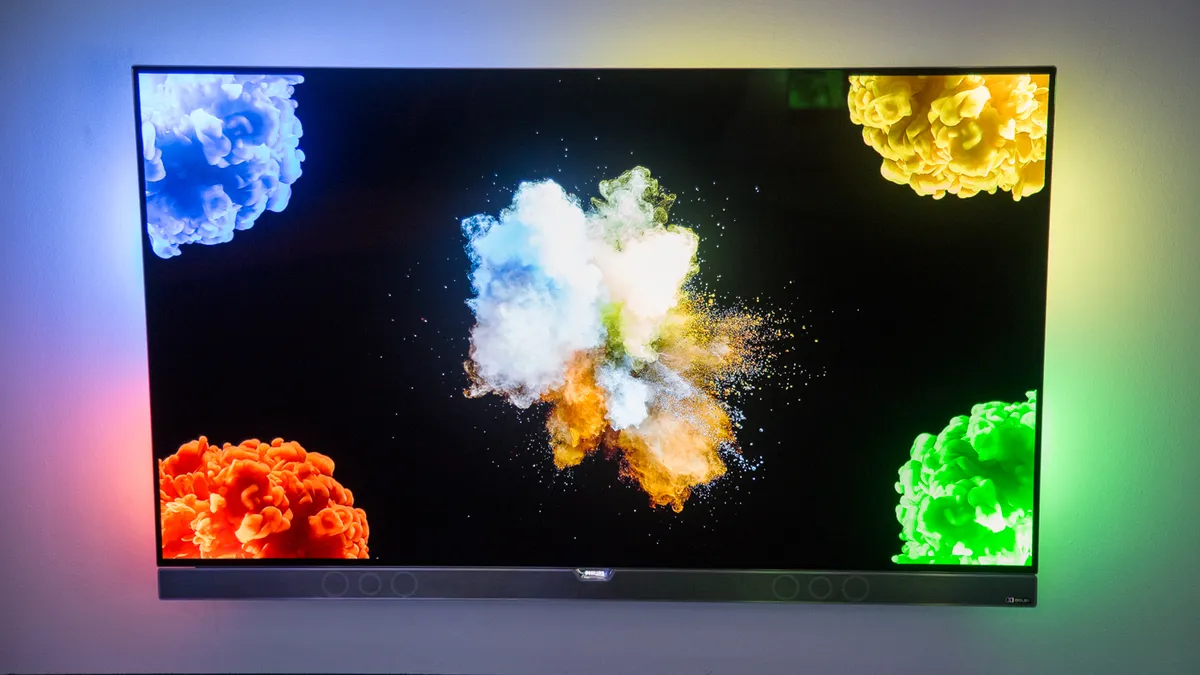Introduction
The battle between OLED and QLED has been a hot topic in the world of TV technology. As consumers look to upgrade their televisions, they are faced with the choice of these two competing technologies. OLED (Organic Light-Emitting Diode) and QLED (Quantum Light-Emitting Diode) have their own unique strengths and features, making it important to understand the differences between them.
OLED technology produces images by individually lighting up each pixel, resulting in true blacks and vibrant colors. This is achieved by using organic compounds that emit light when an electric current passes through them. On the other hand, QLED TVs utilize quantum dots, which are tiny nanoparticles that act as a filter to enhance color purity and brightness.
Both technologies have their pros and cons, and the decision ultimately depends on your personal preferences and viewing habits. In this article, we will explore the key factors to consider when choosing between OLED and QLED TVs, including picture quality, contrast ratio, color accuracy, viewing angles, HDR performance, brightness, energy efficiency, response time, motion handling, gaming performance, and price.
By understanding the differences and capabilities of each technology, you’ll be better equipped to make an informed decision about which type of TV is best suited to your needs.
What is OLED technology?
OLED, or Organic Light-Emitting Diode, is a display technology that has gained popularity in recent years for its stunning picture quality and slim design. Unlike traditional LED (Light-Emitting Diode) displays that require a backlight to illuminate the screen, OLED panels are self-emissive, meaning that each pixel emits its own light.
This is made possible by using organic compounds that emit light when an electric current passes through them. These organic compounds are arranged in layers, including an emissive layer, a conductive layer, and a substrate layer. When electricity is applied, the emissive layer emits light, creating the desired colors and brightness.
One of the key advantages of OLED technology is its ability to achieve true black levels. Since each pixel can be controlled individually and turned off completely, OLED displays can produce perfect blacks, enhancing contrast and overall picture quality. This creates a more immersive viewing experience, especially in dark or low-light scenes.
Another notable benefit of OLED technology is its color accuracy and vibrancy. Because each pixel can emit light independently, OLED displays can reproduce a wide range of colors with incredible precision. This results in vibrant and true-to-life images that are rich in detail. Additionally, OLED panels have excellent viewing angles, ensuring that the colors and contrast remain consistent when viewed from different positions.
Furthermore, OLED technology offers fast response times, making it ideal for gaming and fast-paced content. The individual pixel control allows for quick pixel transitions, minimizing motion blur and ghosting, thus delivering smoother and more fluid visuals.
In terms of design, OLED panels are incredibly thin and flexible, allowing for ultra-slim TVs and curved screens. Additionally, they consume less power compared to traditional LCD displays, as OLED panels only require energy to light up the necessary pixels, rather than powering a backlight for the entire screen.
While OLED technology offers many advantages, it is important to consider the potential drawbacks as well. OLED displays can be susceptible to burn-in, where static images or logos can leave a permanent ghost-like impression on the screen. However, advancements in technology have significantly reduced the likelihood of burn-in, and most users will not encounter this issue with typical viewing habits.
In summary, OLED technology harnesses the power of organic compounds to deliver exceptional picture quality, true blacks, vibrant colors, wide viewing angles, and fast response times. Its sleek design and energy efficiency make it a popular choice among consumers looking for a premium TV experience.
What is QLED technology?
QLED, or Quantum Light-Emitting Diode, is a display technology that has been developed by Samsung to compete with OLED. Unlike OLED, which uses organic compounds to emit light, QLED TVs utilize quantum dots, which are tiny nanoparticles that can manipulate light and enhance color reproduction.
QLED displays consist of a layer of quantum dots placed in front of an LED backlight. These quantum dots act as a filter, absorbing and emitting light at specific wavelengths. When the LED backlight shines through the quantum dots, they emit pure, precise colors, resulting in vibrant and lifelike images.
One of the main selling points of QLED technology is its ability to achieve bright and vivid colors. Quantum dots can produce a wider color gamut, enabling the TV to display a broader range of colors compared to conventional LED displays. This enhances the overall color accuracy and makes content appear more realistic and vibrant.
Another advantage of QLED technology is its excellent contrast ratio. While QLED TVs still require backlighting, advancements in the technology have led to enhancements in local dimming, which allows for more precise control over backlight zones. This improves the contrast between bright and dark areas of the screen and enhances the overall picture quality.
QLED displays also offer excellent peak brightness levels. The backlighting used in QLED TVs can achieve higher levels of brightness compared to OLED panels. This makes QLED technology particularly well-suited for well-lit rooms or environments with a lot of ambient light.
Additionally, QLED panels have wider viewing angles compared to traditional LCD displays. While they may not match the wide viewing angles of OLED, the improvement over conventional LCD technology ensures that the colors, contrast, and overall picture quality remain consistent even when viewed from an angle.
In terms of response time, QLED technology generally performs well, offering fast and smooth motion handling. However, due to the limitations of the underlying LCD technology, some QLED displays may exhibit slight motion blur or ghosting, particularly in fast-paced or action-packed scenes. Nonetheless, many QLED TVs come equipped with features like motion interpolation and gaming modes to help mitigate these issues.
Lastly, QLED technology offers a more affordable option compared to OLED. Due to differences in manufacturing processes and materials, QLED TVs tend to be more budget-friendly, making them accessible to a wider range of consumers.
In summary, QLED technology utilizes quantum dots to enhance color reproduction, brightness, contrast, and viewing angles. It offers a more affordable alternative to OLED with vibrant colors and excellent peak brightness levels. While it may not reach the same level of individual pixel control as OLED, QLED displays provide a compelling option for consumers looking for a high-quality TV experience.
Comparison of Picture Quality
When it comes to picture quality, both OLED and QLED technologies have their own strengths and considerations. Understanding their differences can help you make an informed decision based on your specific preferences.
Starting with OLED, its self-emissive nature allows for unparalleled contrast and true black levels. Since each pixel can be individually turned off, OLED displays can achieve perfect blacks, enhancing the overall image quality and providing a more immersive viewing experience. This creates a higher level of contrast between bright and dark scenes, resulting in more detail and depth on the screen.
Additionally, OLED technology offers exceptional color accuracy and vibrancy. Each pixel emits its own light, allowing for precise control over color reproduction. This translates into more lifelike and true-to-life images, with rich and accurate colors that pop off the screen. OLED displays also provide wider viewing angles, ensuring that the colors and contrast do not degrade when viewed from different positions in the room.
On the other hand, QLED technology excels in terms of brightness and peak luminance. The quantum dots used in QLED TVs can produce higher levels of brightness compared to OLED panels, making them well-suited for well-lit rooms or environments with a lot of ambient lighting. This leads to a more vibrant and impactful image, especially when watching content with bright colors or HDR (High Dynamic Range) material.
QLED displays also offer an expanded color gamut, thanks to the quantum dots’ ability to emit pure, precise colors. This results in a wider range of colors being displayed, enhancing the overall color accuracy and making content appear more realistic and visually appealing.
Another factor to consider is the handling of fast-paced motion and response time. OLED technology generally performs well in this aspect, thanks to its ability to individually control each pixel. This allows for quick pixel transitions, minimizing motion blur and ghosting. However, some QLED displays may offer faster response times, especially when it comes to gaming or watching fast-action content. This is due to the underlying LCD technology used in QLED panels, which typically has better native response times compared to OLED.
Lastly, it’s worth noting that both OLED and QLED technologies have made significant advancements in HDR performance. HDR allows for a wider dynamic range of colors and brightness, resulting in more lifelike and immersive visuals. While OLED panels can achieve excellent HDR performance with their deep blacks and vibrant colors, QLED displays also excel in this area, thanks to their higher peak luminance and expanded color gamut.
In summary, OLED technology offers exceptional contrast, true black levels, and precise color reproduction. It performs well in motion handling and provides wider viewing angles. QLED technology, on the other hand, boasts higher levels of brightness, expanded color gamut, and excellent handling of HDR content. Consider your priorities in terms of deep blacks, color accuracy, brightness, and motion handling to determine which technology aligns better with your viewing preferences.
Contrast Ratio and Black Levels
When it comes to contrast ratio and black levels, OLED technology has a significant advantage over QLED. The self-emissive nature of OLED allows for individual pixel control, which translates into exceptional contrast and true black levels.
Contrast ratio refers to the difference between the brightest and darkest parts of an image. With OLED displays, each pixel can be turned on or off independently, meaning that when a pixel is off, it emits absolutely no light. As a result, OLED TVs can achieve perfect blacks, as the turned-off pixels do not emit any light, resulting in an infinite contrast ratio. This creates a more immersive viewing experience, especially when watching content with scenes that require deep blacks, such as movies with lots of shadows or night scenes. The deep blacks enhance the overall image quality and provide a greater sense of depth and detail on the screen.
In contrast, QLED technology requires a backlight as it does not have individual pixel control. While QLED panels use local dimming and advanced backlighting techniques to enhance contrast, they cannot match the deep blacks and infinite contrast ratio of OLED. This is because even in dark scenes, the backlight on a QLED TV needs to be on to some extent, which can lead to some light bleed and greyish blacks. However, it’s worth noting that the latest QLED models have made significant advancements in local dimming technology, resulting in improved black levels and contrast performance.
Overall, if achieving true black levels and having an exceptional contrast ratio is a priority for you, then OLED is the clear winner in this category. Its ability to turn off pixels completely, resulting in perfect blacks, provides a more immersive and captivating viewing experience. However, if you are not overly concerned about deep blacks and infinite contrast and are more focused on other aspects such as brightness or color accuracy, then QLED can still offer a visually impressive display. It’s important to consider your viewing preferences and use cases to determine which technology aligns better with your needs.
Color Accuracy and Vibrancy
Color accuracy and vibrancy are crucial factors when it comes to the visual quality of a display. Both OLED and QLED technologies strive to deliver accurate and vibrant colors, but they do so in slightly different ways.
OLED technology excels in color accuracy due to its ability to individually control each pixel’s brightness. This means that each pixel can emit its own light, resulting in precise color reproduction. OLED displays can reproduce a wide gamut of colors with exceptional accuracy, making them ideal for those who prioritize color fidelity. Whether you are enjoying a nature documentary or watching a visually stunning film, OLED’s color accuracy ensures that you experience colors as intended by content creators.
In addition to color accuracy, OLED displays also offer rich vibrancy. The self-emissive nature of OLED, combined with its ability to produce deep blacks, enhances the overall color vibrancy. The contrast between bright colors and true blacks creates a more visually striking image. Colors seem to pop off the screen, providing a more immersive and engaging viewing experience that brings content to life.
On the other hand, QLED technology approaches color reproduction in a different manner. QLED displays rely on quantum dots, which act as filters for the backlight. These quantum dots emit precise colors when illuminated by the LED backlight, resulting in enhanced color purity and vibrancy.
The use of quantum dots in QLED technology allows for a wider color gamut compared to standard LED displays. This expanded color range enables QLED TVs to reproduce a larger variety of colors, making the images on the screen appear more vivid and true-to-life. Whether you’re watching a vibrant sunset scene or a display of colorful artwork, QLED’s extended color capability adds a level of vibrancy that can be visually stunning.
However, it’s important to note that color accuracy can be subjective and varies from model to model within each technology. Additionally, individual calibration settings, color profiles, and personal preferences can also affect the perceived color accuracy and vibrancy of a display.
Ultimately, both OLED and QLED technologies have made significant advancements in color reproduction, offering visually impressive displays with accurate and vibrant colors. If color accuracy and deep blacks are your main priorities, OLED may be the preferred choice. However, if you value a wider color gamut and enhanced vibrancy, QLED can provide a compelling option. It’s advisable to compare displays side by side and consider your own preferences to determine which technology suits your viewing needs best.
Viewing Angles
Viewing angles refer to the range of angles from which a display can be viewed while maintaining consistent color accuracy, contrast, and image quality. Both OLED and QLED technologies have their own characteristics when it comes to viewing angles.
OLED displays offer excellent viewing angles due to the nature of their self-emissive pixel technology. Each pixel emits its own light, allowing for consistent picture quality from almost any angle. Whether you are sitting directly in front of the screen or viewing it from the side, the colors, contrast, and overall image quality remain consistent. This makes OLED well-suited for larger rooms or if you have a wide seating arrangement where not everyone is sitting directly in front of the TV.
On the other hand, QLED technology, which is based on traditional LCD panels, has improved over time but still has limitations when it comes to viewing angles. While QLED displays offer wider viewing angles compared to standard LCD displays, they may not match the wide viewing angles of OLED. When viewed from off-center positions, the picture quality on QLED TVs can degrade slightly, with colors appearing less vibrant and contrast levels dropping. The extent of this degradation varies between QLED models and manufacturers, with some performing better than others.
It’s important to note that if you frequently watch content with others or have a room setup where not everyone is directly facing the TV, OLED’s wide viewing angles can provide a better viewing experience. This is particularly advantageous for immersive movie nights or when gaming with friends, ensuring that everyone can enjoy the same quality visuals regardless of their seating position.
However, it’s worth mentioning that for most viewers in typical home setups, the differences in viewing angles between OLED and QLED may not be significant enough to cause any major issues. In a typical living room setup where viewers are relatively close to the TV and sitting within a reasonable angle, both technologies can offer an enjoyable and immersive viewing experience.
Ultimately, if wide and consistent viewing angles are a priority, OLED technology may be the better choice. However, it’s recommended to consider your specific viewing setup and habits to determine whether the differences in viewing angles will have a significant impact on your overall TV-watching experience.
HDR Performance
HDR, or High Dynamic Range, is a technology that enhances the visual quality of displays by increasing the range of colors, brightness levels, and contrast. Both OLED and QLED technologies have made significant advancements in HDR performance, delivering stunning and immersive visuals.
OLED technology has proven to be exceptional in handling HDR content. With its ability to individually control each pixel’s brightness, OLED displays can achieve deep blacks and intense highlights, resulting in a greater dynamic range. This allows for detailed shadow areas and bright highlights to coexist in the same scene, enhancing the overall realism and depth of the image. The combination of OLED’s true black levels and vibrant colors ensures that HDR content is showcased with stunning accuracy and visual impact.
QLED technology has also made strides in HDR performance. Quantum dots used in QLED displays enable them to produce a wider color gamut, allowing for more accurate and vibrant color reproduction in HDR content. This leads to a more lifelike and visually appealing image. Additionally, the higher peak brightness levels achievable by QLED TVs enhance the overall HDR experience. Bright areas in HDR content can appear even more dazzling, creating a greater sense of depth and realism.
It’s worth noting that the HDR performance of OLED and QLED can vary between different models and manufacturers. Factors such as panel quality, local dimming capabilities, color gamut, and overall HDR implementation can impact the HDR experience on each TV. It’s advisable to do thorough research and read reviews specifically focused on the HDR performance of the TV model you are considering.
When comparing HDR performance between OLED and QLED technologies, both have their merits. OLED’s deep blacks and individual pixel control contribute to exceptional contrast and accurate representation of dark and bright areas in HDR content. This results in a more immersive and realistic viewing experience. On the other hand, QLED’s wider color gamut and high peak brightness levels provide vibrant and impactful visuals, accentuating the detail and color accuracy in HDR content.
Ultimately, the choice between OLED and QLED for HDR performance depends on personal preference and priorities. Consider your viewing habits, the content you enjoy, and the specific features and specifications of the TVs you are considering to determine which technology best meets your expectations for HDR content.
Brightness and Peak Luminance
When it comes to brightness and peak luminance, QLED technology has the advantage over OLED. QLED displays are known for their ability to achieve higher levels of brightness, making them well-suited for environments with high ambient light or well-lit rooms.
The use of quantum dots in QLED TVs allows for enhanced light output. These tiny nanoparticles can emit light with high efficiency, resulting in brighter scenes and highlights. When combined with advanced backlighting techniques, such as local dimming, QLED displays can deliver impressive peak brightness levels.
With higher peak luminance, QLED technology excels at showcasing content with bright colors and highlights. Whether you’re watching a sunny outdoor scene or a fireworks display, QLED can provide a dazzling visual experience. The increased brightness adds to the overall visual impact, making the image pop off the screen.
On the other hand, OLED displays generally have lower peak brightness compared to QLED. The self-emissive nature of OLED means that each pixel can emit its own light, but OLED panels have limitations in terms of overall brightness. While OLED can produce deep blacks and accurate colors, its brightness levels may not match the intensity that QLED displays can achieve.
However, it’s important to note that the actual need for high peak brightness may vary depending on your viewing environment and personal preference. In a dimly lit room or with controlled lighting, OLED’s lower peak brightness may not be a significant factor, as the deep blacks and contrast can still create a visually striking and immersive experience.
When comparing brightness and peak luminance, it’s essential to consider your specific viewing conditions. If you have a well-lit room or frequently watch content with high levels of ambient light, QLED’s higher brightness may be more beneficial for reducing reflections and maintaining a vibrant image. On the other hand, if you typically watch content in a darker environment and prioritize deep blacks and contrast, OLED’s lower peak brightness may not be a major concern.
In summary, QLED technology offers higher levels of brightness and peak luminance compared to OLED. This can result in a brighter and more visually impactful image, particularly in well-lit rooms or with content that demands high brightness levels. However, it’s important to consider your specific viewing environment and preferences to determine the importance of brightness in your overall TV-watching experience.
Energy Efficiency
Energy efficiency is an important consideration when choosing a TV, as it not only impacts your electricity bills but also has an environmental impact. When comparing OLED and QLED technologies, OLED displays tend to be more energy-efficient.
OLED technology has a significant advantage in terms of energy efficiency due to its self-emissive pixel design. Unlike QLED, which requires a backlight to illuminate the screen, OLED panels can individually control each pixel’s brightness. This means that pixels can be turned off completely to achieve true blacks, resulting in energy savings. With OLED, energy is only consumed by the pixels that need to be lit up, rather than by a backlight that constantly requires power.
In addition to the energy-saving benefits of individual pixel control, OLED displays also require less power to achieve equivalent brightness levels compared to QLED. This can further contribute to energy efficiency, especially in scenarios where devices are used for extended periods.
On the other hand, QLED technology relies on LED backlights to illuminate the screen. While QLED displays have made advancements in energy efficiency and employ various techniques to minimize power consumption, they still require power to maintain the backlight. The need for backlighting means that QLED displays consume more energy compared to OLED counterparts, as the entire screen is illuminated even in darker scenes.
It’s important to note that the energy efficiency of TVs can vary depending on various factors, such as screen size, brightness settings, usage patterns, and specific models within each technology category. It’s advisable to consult the energy efficiency rating and specifications provided by the manufacturer to get a better understanding of the expected energy consumption of the TV you are considering.
In summary, OLED technology offers better energy efficiency compared to QLED. The individual pixel control and the elimination of the need for a backlight contribute to reduced power consumption. However, it’s recommended to consider other factors as well, such as picture quality, viewing angles, and budget, to make an informed decision based on your specific needs and priorities.
Response Time and Motion Handling
Response time and motion handling are essential factors to consider when evaluating the performance of a TV, especially for fast-paced content like sports, action movies, and gaming. Both OLED and QLED technologies have their own characteristics when it comes to response time and motion handling.
OLED technology generally performs well in terms of response time. Because each pixel can be individually controlled and turned on or off, OLED displays can achieve fast pixel transitions. This results in minimal motion blur and ghosting, making fast-moving scenes appear smoother and more fluid. Whether you’re watching a high-speed car chase or engaging in fast-paced gaming, OLED’s quick response time contributes to a more immersive experience.
QLED technology, on the other hand, typically utilizes LCD panels, which inherently have faster native response times compared to OLED. This gives QLED an advantage in terms of motion handling. With faster pixel response times, QLED displays can reduce motion blur and minimize image smearing during fast-paced scenes, resulting in sharper and more clearly defined visuals.
However, it’s important to note that QLED displays may still exhibit some motion blur or ghosting, especially in extreme gaming scenarios or in scenes with rapid motion and transitions. To address this, many QLED TVs come equipped with features such as motion interpolation or gaming modes specifically designed to reduce motion blur and enhance motion resolution.
When it comes to gaming, both OLED and QLED technologies can provide an immersive gaming experience. The quick pixel response and low input lag of OLED displays make them well-suited for gaming, minimizing motion blur and providing smooth gameplay. QLED displays, with their faster native response times, are also popular among gamers as they can offer similar benefits.
In summary, OLED technology offers excellent response times and minimal motion blur, thanks to its individual pixel control. QLED technology, with its faster native response times, also performs well in motion handling, although some models may still exhibit minor motion blur in certain scenarios. Whether you prioritize pixel response times or native response times, both OLED and QLED displays can deliver enjoyable gaming experiences and offer smooth motion handling for everyday video content.
Gaming Performance
Gaming performance is a crucial aspect to consider when choosing a TV, particularly if you are an avid gamer. Both OLED and QLED technologies have their own strengths and considerations when it comes to gaming.
OLED technology offers several advantages for gaming. With its ability to control each pixel individually, OLED displays can achieve fast response times, resulting in minimal motion blur and ghosting. This allows for a smoother and more immersive gaming experience, especially during fast-paced action sequences or competitive gaming. Additionally, OLED’s exceptional contrast ratio and deep blacks contribute to excellent image quality and visual details, enhancing the overall gaming experience. OLED displays are also known for their low input lag, meaning that there is minimal delay between controller input and on-screen action, providing more responsive gameplay.
QLED technology also performs well in gaming. With their faster native response times compared to OLED, QLED displays can handle motion and fast-paced scenes effectively. This leads to reduced motion blur and smooth rendering of on-screen action. Many QLED models also come equipped with specific gaming features, such as variable refresh rate (VRR) and Auto Low Latency Mode (ALLM). These features aim to further minimize input lag and provide a seamless gaming experience.
In terms of gaming-specific features, both OLED and QLED TVs are compatible with the latest gaming technologies and consoles. These include support for 4K resolution, high dynamic range (HDR), and technologies like HDMI 2.1, which allows for higher frame rates and enhanced gaming experiences. It’s important to check the specifications of individual models to ensure compatibility with the gaming features and technologies you desire.
Ultimately, the choice between OLED and QLED for gaming performance depends on personal preference and priorities. If you prioritize deep blacks, exceptional contrast, and individual pixel control, OLED may provide a more immersive gaming experience. On the other hand, if you require faster native response times and features specific to gaming, QLED can be a strong contender.
It’s worth considering other factors as well, such as overall picture quality, viewing angles, and budget, to make a well-rounded decision based on your specific gaming preferences. Additionally, testing and experiencing the gaming performance firsthand, if possible, can be beneficial in determining which technology best suits your gaming needs.
Price and Availability
Price and availability are crucial factors to consider when choosing between OLED and QLED TVs. Here, we will explore the general pricing and availability of both technologies to help you make an informed decision.
OLED technology, known for its exceptional picture quality and premium features, typically comes with a higher price tag compared to QLED. The manufacturing process of OLED displays is more complex and expensive, which contributes to the higher cost. Additionally, OLED panels are primarily produced by a single manufacturer, which can limit the options and result in less competition in the market.
Despite being more expensive, the price of OLED TVs has been gradually decreasing over the years as the technology becomes more widespread and production processes improve. However, it’s important to note that OLED TVs still tend to be more expensive than their QLED counterparts, especially for larger screen sizes and higher-end models.
On the other hand, QLED technology is generally more competitively priced compared to OLED. Multiple manufacturers produce QLED displays, leading to a broader range of options in terms of price points and models. This increased competition has resulted in more affordable QLED TVs, making them accessible to a wider range of consumers.
While QLED technology offers a more budget-friendly option, it’s worth noting that higher-end QLED models with advanced features and larger screen sizes can still be comparably priced to mid-range OLED TVs. Additionally, keep in mind that prices can vary based on region, store, and promotional offers.
In terms of availability, QLED TVs are more widely available compared to OLED TVs. Since multiple manufacturers produce QLED displays, they are readily found in stores and online retailers around the world. This availability makes QLED TVs easier to find and purchase, with a wider selection of models and sizes to choose from.
On the other hand, OLED displays are primarily produced by one manufacturer, resulting in a more limited selection of brands and models. While OLED TVs are gaining popularity and becoming more widely available, they may not be as easily found in every store or region compared to QLED TVs.
It’s advisable to consider your budget, desired features, and priorities when making a purchasing decision. If you are more budget-conscious and prefer a wider range of options, QLED technology may be the more suitable choice. However, if you prioritize top-notch picture quality and are willing to invest in a premium TV, OLED technology can provide a visually stunning experience.
Conclusion
In conclusion, both OLED and QLED technologies offer distinct advantages and considerations when it comes to choosing a TV. Understanding the differences between them can help you make an informed decision based on your specific needs and preferences.
OLED technology provides exceptional picture quality with its ability to achieve true black levels and individual pixel control. The deep blacks, vibrant colors, and wide viewing angles of OLED displays create an immersive and visually captivating experience. OLED is well-suited for those who prioritize contrast, color accuracy, and an overall premium viewing experience.
QLED technology, on the other hand, offers high brightness levels, enhanced color vibrancy, and improved motion handling. QLED displays are known for their ability to produce dazzling and vibrant images, making them a great choice for well-lit rooms or environments with high ambient light. QLED can provide a visually striking experience, especially for users who value brightness, peak luminance, and gaming performance.
When making a decision between OLED and QLED, it’s important to consider various factors such as contrast ratio, black levels, color accuracy and vibrancy, viewing angles, HDR performance, brightness, energy efficiency, response time, motion handling, gaming performance, price, and availability. Determine which factors are most important to you based on your viewing habits, preferences, and budget.
It’s worth noting that both technologies continue to advance, with OLED and QLED displays becoming increasingly impressive with each new generation. It’s advisable to stay informed about the latest releases and developments in order to make the most informed decision.
Ultimately, the choice between OLED and QLED depends on your own priorities and preferences. Whether you prioritize deep blacks and individual pixel control or vibrant colors and high brightness, both OLED and QLED technologies can deliver stunning visuals and an immersive viewing experience.









